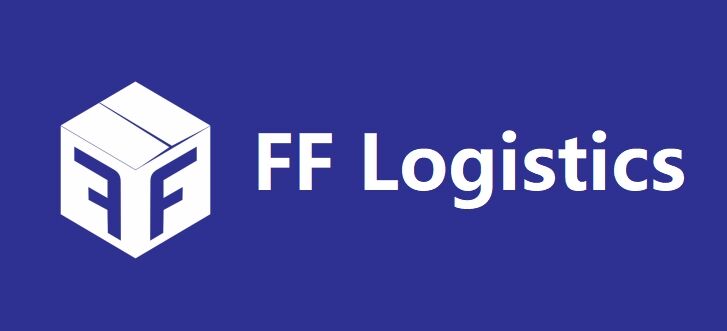The Role of 3PL in Modern Inventory Management
Connecting Inventory Management to 3PL Efficiency
Outsourcing inventory management to third-party logistics (3PL) providers can streamline ecommerce fulfillment services and significantly enhance efficiency. By leveraging the expertise and infrastructure of 3PL providers, businesses achieve quicker lead times and improved customer service, allowing them to concentrate on core operations and ecommerce 3PL scalable growth strategies. 3PL providers utilize data analytics to optimize stock levels, ensuring that businesses meet customer demand without overstocking. This operational agility allows companies to maintain a competitive edge while adapting swiftly to market changes. Utilizing modern technology, 3PLs track and manage inventory efficiently, reducing unnecessary costs and inconsistencies in supply chains. Such logistics optimization is essential for maintaining seamless ecommerce 3pl operations significantly enhancing ecommerce fulfillment services.
Key Metrics: Storage Turnover vs. Carrying Costs
Understanding storage turnover is crucial for assessing how quickly inventory is sold and replaced, showcasing the effectiveness of ecommerce fulfillment services. High turnover rates often indicate efficient operations, where inventory moves fast due to strong demand and streamlined processes. On the other hand, carrying costs—comprising expenses such as storage, insurance, and depreciation—play an integral role in financial planning within a 3PL relationship. Identifying and balancing these costs against storage turnover rates allows businesses to optimize profitability and achieve a competitive advantage. Managing these metrics effectively is vital for long-term success in ecommerce fulfillment and pick and pack services. Businesses can make informed decisions that strategically align their resources with demand, thereby optimizing both operational costs and customer satisfaction in the endeavor to enhance 3PL fulfillment strategies.
Smart Inventory Optimization Techniques for Ecommerce Fulfillment
Implementing Just-In-Time (JIT) Strategies
Just-In-Time (JIT) strategies are a powerful way to optimize inventory by minimizing waste and maximizing efficiency. By receiving goods exactly when they are needed in the production process, businesses can leverage the capabilities of third-party logistics (3PL) providers to streamline operations. Effective collaboration with suppliers is critical for successful JIT implementation, as it allows for increased flexibility in managing inventory levels. Utilizing technology to monitor inventory in real-time further enhances the effectiveness of JIT, allowing businesses to adapt quickly to changes in demand and reduce unnecessary stockpiling.
Leveraging Cross-Docking for Faster Turnover
Cross-docking is another strategy that significantly reduces storage time by transferring incoming goods directly to outgoing shipments, thereby enhancing overall efficiency. A 3PL provider outfitted with cross-docking capabilities can dramatically lower storage costs and expedite delivery times. However, implementing this strategy requires transparent communication and seamless coordination between suppliers and 3PLs. This connectivity ensures goods move swiftly through the supply chain, fulfilling customer orders efficiently and reducing delays often encountered with traditional warehousing methods.
Cycle Counting for Real-Time Accuracy
Cycle counting is a valuable tool for maintaining accurate ecommerce fulfillment services inventory records and preventing discrepancies. By partnering with a 3PL, businesses can efficiently implement cycle counting, taking advantage of their technological resources. Real-time data acquired from regular cycle counts enables better decision-making regarding inventory replenishment. This ongoing accuracy not only prevents stockouts and excess inventory but also aids in financial planning, ensuring resources are efficiently allocated across the supply chain.
Warehouse Strategies to Boost Operational Speed
Slotting Optimization for Space Utilization
Slotting optimization is a critical strategy that addresses how products are organized within a warehouse to maximize efficiency. By aligning the placement of items with their demand and turnover rates, businesses can significantly reduce retrieval times and enhance overall productivity. Notably, precise slotting minimizes wasted space, leading to improved space utilization in warehouse operations. Collaborating with a third-party logistics (3PL) partner can offer insights into effective slotting configurations by analyzing data trends and customer behavior. Through such collaboration, businesses can achieve optimized storage systems that not only meet the space utilization requirements but also enhance workflow efficiency.
Automated Pick/Pack Systems for Ecommerce 3PL
Investing in automated systems for the pick and pack processes transforms ecommerce fulfillment into a more streamlined operation. These systems drastically reduce labor costs while increasing the accuracy and speed of order processing. Automation eliminates manual errors and facilitates faster fulfillment, a crucial aspect in ecommerce operations where timely deliveries can make or break customer relationships. Third-party logistics providers equipped with advanced technology are essential allies in this transformation, empowering businesses with scalable solutions for handling increased demand. Advanced systems ensure rapid pick, pack, and dispatch operations, enhancing the efficiency of ecommerce fulfillment services provided by 3PL partners.
Multi-Warehouse Distribution Networks
Multi-warehouse distribution networks are pivotal in ensuring faster delivery times and wider geographical reach. By strategically using multiple warehouse locations, businesses can optimize Shipping routes and reduce transit times significantly. The management of these networks by experienced third-party logistics providers enhances cost efficiency while offering service improvements. Additionally, placing warehouse locations aligned with customer demographic data further boosts delivery performance. Such logistical efficiency not only fosters greater customer satisfaction but also allows for flexible scaling in response to changing market demands. Leveraging the capabilities of 3PL partners in managing these networks ensures seamless operations across diverse regions, benefiting from ecommerce fulfillment services.
Data-Driven Demand Forecasting with 3PL Partners
Predictive Analytics for Stock Replenishment
Predictive analytics is a game-changer for businesses looking to enhance their inventory management and better forecast demand. By utilizing advanced predictive analytics, businesses can anticipate customer demand more accurately, ensuring that their inventory levels are optimized to meet upcoming needs. This not only reduces the risk of overstocking but also minimizes the chances of stockouts, which can lead to lost sales opportunities and decreased customer satisfaction. Working with 3PL partners presents an excellent opportunity to leverage their sophisticated analytical tools and expertise. These partners can provide businesses with precise data that enables well-informed decisions regarding stock replenishment strategies. By utilizing insights from historical sales data and integrating this information with real-time analytics and ecommerce fulfillment services, businesses can dramatically improve their stock management, ensuring availability while reducing excess inventory.
Adapting to Seasonal Demand Fluctuations
Adapting to seasonal demand fluctuations is an essential aspect of successful inventory management, and collaboration with 3PL partners can be particularly advantageous in this regard. Understanding and anticipating seasonal trends enable businesses to engage in proactive planning, preparing them for changes in market demand throughout the year. By tapping into the resources and expertise of 3PL providers, businesses can respond swiftly and efficiently to the ebbs and flows of customer demand, ultimately enhancing their ecommerce fulfillment services. Utilizing historical data further aids in recognizing patterns, providing businesses the foresight needed to adjust inventory levels strategically and mitigate the risk of stockouts during peak demand seasons. This method not only helps maintain optimal inventory levels but also minimizes excess stock, leading to reduced carrying costs—key elements for achieving efficient inventory management and promoting customer satisfaction through reliable ecommerce delivery services.
Technology Integration in 3PL Partnerships
Real-Time Inventory Tracking Solutions
Implementing real-time ecommerce fulfillment services inventory tracking solutions significantly enhances visibility and control over stock levels. By providing real-time updates, these systems help reduce discrepancies, ensuring inventory accuracy. 3PL firms equipped with these advanced tracking systems enable efficient decision-making in inventory management. Such systems not only enhance visibility but also streamline processes—empowering businesses to minimize the risks associated with overstocking and stockouts. Integrating inventory data across systems fosters transparency, enabling seamless operations and improved customer satisfaction.
WMS Automation for 3PL Fulfillment
The use of Warehouse Management Systems (WMS) in automating operational processes brings About improved accuracy and speed in order fulfillment. 3PL providers with robust WMS automation capabilities can better coordinate inventory flows and manage fulfillment workflows efficiently. Automation leads to reduced operational costs by streamlining processes, while also improving turnaround times. This technological advancement allows businesses to focus on strategic growth by delegating routine tasks to automated systems, thereby enhancing overall operational efficiency.
Robotics in Order Fulfillment Workflows
Integrating robotics technology within order fulfillment processes results in dramatic enhancements in efficiency and accuracy. 3PLs leveraging robotic systems can optimize picking accuracy and speed, leading to faster deliveries and increased customer satisfaction. The adoption of robotics not only streamlines current operations but also facilitates scalability to accommodate the growth of ecommerce businesses. This investment supports both immediate and future business needs by providing a scalable solution that adapts to fluctuating demand while maintaining high levels of efficiency in order fulfillment workflows.
FAQ
What is 3PL?
3PL refers to third-party logistics providers who offer comprehensive inventory management, warehousing, and logistics solutions to businesses.
How does 3PL enhance inventory management efficiency?
3PL enhances inventory management efficiency by utilizing advanced analytics, technology integration, and streamlined logistics operations, which help businesses optimize stock levels and reduce costs.
What are Just-In-Time strategies?
Just-In-Time strategies involve receiving goods exactly when needed in the production process, reducing waste and increasing flexibility in inventory management.
How can cross-docking improve efficiency?
Cross-docking improves efficiency by transferring goods from incoming shipments directly to outgoing ones, minimizing storage time and costs.
Why is cycle counting important?
Cycle counting is important for maintaining accurate inventory records, preventing discrepancies, and ensuring efficient resource allocation across supply chains.
What role do Warehouse Management Systems (WMS) play in 3PL?
WMS automate operational processes, improving accuracy and speed in order fulfillment, and help coordinate inventory flows efficiently.
How do robotics enhance order fulfillment?
Robotics enhance order fulfillment by increasing pick accuracy and speed, allowing for faster deliveries and facilitating scalability in operations.



